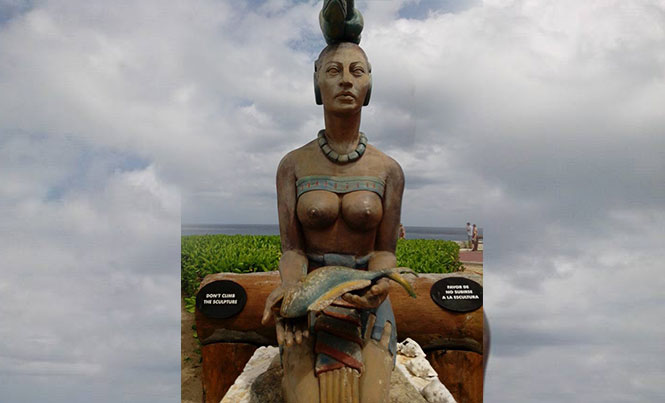
For centuries, ancient cultures have used legends and folklore in an attempt to explain the universe around them. The Maya of the Yucatan are no different and our resident anthropologist shares the Maya belief of how the sun, moon and stars came to be.
As the legend goes, in these lands many years ago there was a beautiful young woman called Ix Chel (pronounced ish-CHell), whom everyone loved, especially Itzamná (its-am-NAH). However, there was another young man who was also in love with her, and the men decided to fight to the death to win her love. In the fight, Itzamná was killed. Ix Chel, who could not stand the death of her beloved, decided to take her own life. Both ascended to heaven, and were reborn as gods: Itzamná as the sun god and Ix Chel as the moon goddess.
From that time, Itzamná illuminated the night with stars for his beloved. The stars are said to have been young women who, upon dying, became stars.
In Maya mythology, Ix Chel, or “rainbow goddess”, is considered the goddess of fertility, earth, childbirth, pregnancy, healers, and weavers. She is also associated with destruction because of her relationship with the god of war.
In the cemeteries of pre-Hispanic villages, this goddess is represented, usually, in the form of a crescent moon. On other occasions she appears as an old woman with serpents and a pitcher in her hands, pouring water onto the earth. She also appears with a weaving loom.
In pre-Hispanic times, the island of Cozumel was a commercial port of great importance. Additionally, the main sanctuary dedicated to Ix Chel could be found there. The Maya would make a pilgrimage to the San Gervasio temple Cozumel from Xaman Ha and Polé (today Playa del Carmen and Xcaret).
Although their exact locations are not known because of their destruction at the hands of the Spanish, there were other temples and sanctuaries similar to San Gervasio in places like Isla Mujeres.